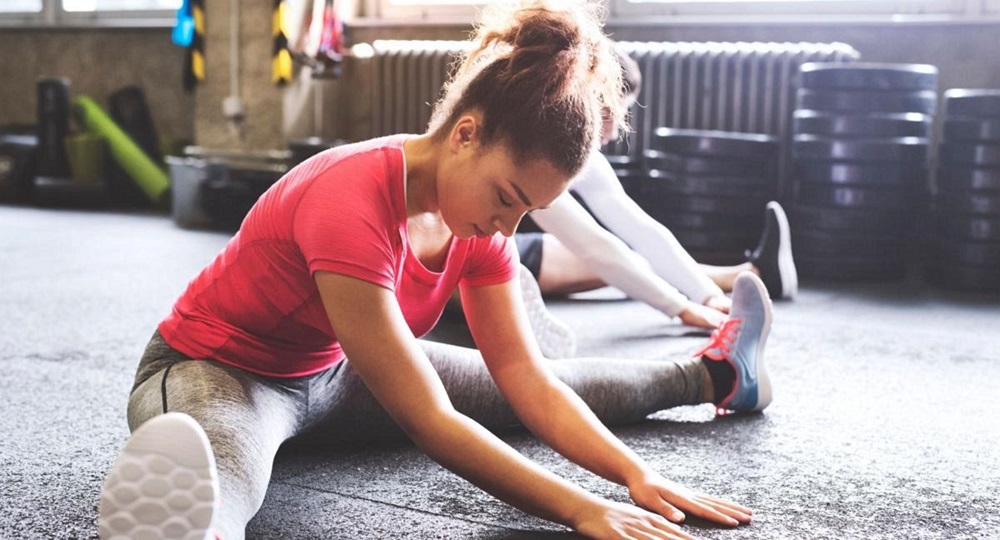Last Updated on: 18th December 2024, 12:32 pm
Flexibility refers to the ability of a muscle or group of muscles to lengthen passively through a range of motion. It’s the stretch you feel as you reach down to tie your shoe or during a yoga pose. Mobility, on the other hand, is the ability of a joint to move actively through a range of motion. This involves not just the muscles, but also the joints, ligaments, and tendons working in harmony.
- Flexibility is a component of mobility, but good flexibility does not necessarily mean good mobility.
- Mobility requires strength, control, and flexibility for smooth, unrestricted movement.
Understanding the distinction between these two concepts is crucial for a balanced fitness routine that promotes healthy muscles and joints, enhancing physical performance, reducing injury risk, and improving quality of life.
The Science Behind Flexibility

At the heart of flexibility lies muscle elasticity. This intrinsic property allows muscles to stretch and return to their original shape, similar to a rubber band. Connective tissues, including tendons and ligaments, also play a pivotal role in our overall flexibility, influencing our ability to stretch further and with less discomfort.
- Genetics, activity level, and age affect flexibility.
- Improvements can be made with regular stretching and conditioning exercises.
Embracing the science behind flexibility allows us to unlock our full movement potential, enhancing our well-being and performance.
The Science Behind Mobility

Joint Health and Function
Mobility hinges on healthy joints, which are designed for stability and motion. Keeping them healthy is crucial for an active lifestyle.
The Importance of Synovial Fluid
Synovial fluid cushions joints, reducing friction during movement, akin to oil in an engine. Without adequate synovial fluid, movements would be stiff and painful.
How Mobility is Affected by Muscle Control
Strong, flexible muscles stabilize joints and power our movements, ensuring efficient movement without strain or injury. Focusing on muscle control enhances mobility, making every movement more fluid and effortless.
Comparing Flexibility and Mobility

While flexibility and mobility are distinct, they are deeply interconnected. Flexibility’s role in mobility is akin to the foundation of a house; without it, the structure – or in this case, movement – lacks support and range. However, possessing flexibility without adequate mobility, or vice versa, limits physical performance.
- Without flexibility, mobility is restricted; movements are less fluid and more prone to injury.
- Without mobility, flexibility is like an unused tool; it’s available but not effectively applied to enhance movement.
To achieve optimal physical health, a balance between both is essential. This balance not only improves athletic performance but also daily activities, making movements smoother and less effortful. By incorporating exercises that enhance both, we can enjoy a wider range of motion, better performance, and a reduced risk of injury, ensuring a healthier, more active lifestyle.
The Importance of Both Flexibility and Mobility in Daily Life

Flexibility and mobility, though distinct, are crucial for a harmonious, healthy life. Flexibility enhances daily activities, making tasks like bending, reaching, or squatting smoother and more effortless. It’s the secret behind our ability to perform simple movements without strain, reducing the risk of injuries by allowing our muscles to stretch and recover more efficiently.
On the flip side, mobility plays a pivotal role in functional movement and athletic performance. It’s the cornerstone of executing complex movements with precision and ease, from climbing stairs to sprinting on a track. Mobility ensures that our joints are not just flexible but also strong and stable, enabling us to move with confidence and agility.
Striking the right balance between flexibility and mobility is akin to mastering an art. It’s about ensuring that our bodies are not just capable of reaching and bending but moving with strength and control through every motion. This balance is the key to unlocking an active, injury-free lifestyle, enhancing both our physical capabilities and our overall well-being.
By dedicating time to both flexibility and mobility exercises, we can achieve a state of physical harmony. This not only elevates our athletic performance but also enriches our daily lives, making every movement more fluid, every task easier, and every day more vibrant. Embrace the duo of flexibility and mobility for a healthier, more dynamic life.
How to Improve Flexibility and Mobility

Improving flexibility and mobility is a journey that enhances life’s physical narrative. To embark on this journey, one must engage in recommended flexibility exercises such as:
- Static stretches post-workout
- Dynamic stretching during warm-ups
- Yoga, which intertwines breath with movement for deeper stretches
These practices not only lengthen the muscles but also prepare the mind and body for the day ahead.
Mobility training techniques, on the other hand, are more dynamic. They include:
- Joint rotations, which lubricate the joints with synovial fluid
- Functional movements that mimic everyday activities, thereby improving range of motion and muscle control
Incorporating tools like resistance bands or foam rollers can further enhance mobility by targeting specific areas and releasing tension.
The role of warm-ups and cool-downs cannot be overstated. A proper warm-up activates the body, increasing blood flow and preparing the muscles and joints for the demands of physical activity. Cool-downs, conversely, allow the body to gradually return to a state of rest, reducing the likelihood of muscle stiffness and promoting recovery. Both are essential bookends to any workout, ensuring the body’s longevity and resilience.
By weaving these elements into a regular routine, the tapestry of our physical capabilities becomes richer. Flexibility and mobility are not just fitness goals; they are the pillars upon which a vibrant, active life is built. Embrace them, and watch as the quality of every movement improves, from the simplest stretch to the most complex exercise.
Bringing It All Together
Flexibility and mobility are the keystones of movement. Together, they forge a path to optimal physical health. By embracing both, we unlock our body’s full potential, navigating the balance between strength and suppleness with grace. This journey enriches our lives, making every motion more fluid and every day more vibrant. Let’s commit to enhancing our flexibility and mobility, for a life filled with dynamic movement and boundless possibilities.

